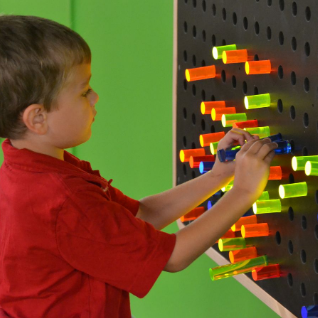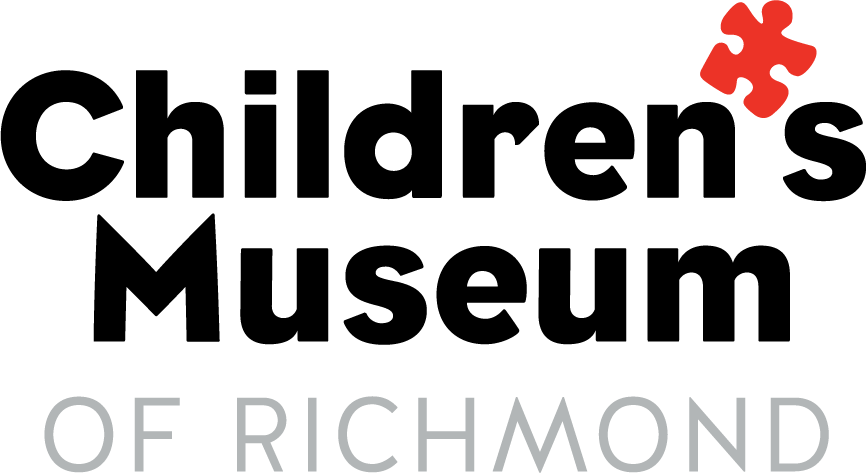Play Ahead, Get Ahead
Posted May 13, 2019 RICHMOND, VA (WWBT) – To the casual observer, seeing children at play may not look like much at all — a fun and often silly way for kids to pass the time with their friends, neighbors and classmates, but nothing more than that. But make no mistake: while play is often…
Published on March 20, 2020

Posted May 13, 2019
RICHMOND, VA (WWBT) – To the casual observer, seeing children at play may not look like much at all — a fun and often silly way for kids to pass the time with their friends, neighbors and classmates, but nothing more than that.
But make no mistake: while play is often fun and silly (and should be!), it’s also a crucial element to encourage healthy development in children, fostering skills that will stay with them well into adolescence and adulthood.
All four area locations of the Children’s Museum are more than just fun places for children to play — they’re also active resources for the whole family to play, learn and grow together.
At the Children’s Museum, children’s growth is inspired by engaging families in the power of play, knowing that everyone can learn more — and develop more rapidly — when they play together. Or to put it another way, when children play ahead, they get ahead!

Of course, your children may be too busy having fun to notice all the learning that’s happening! Here’s seven different examples of life skills that play promotes:
1. Problem-Solving Skills
When children are given the opportunity to easily and confidently explore different outcomes and alternative processes within their playtime, it serves to develop their ability to use problem-solving skills in a creative manner. The type of play that encourages this development is commonly known as exploratory play.
Opportunities for exploratory play are easy to discover at each of the Children’s Museum’s four locations, where children can see how a flowing stream impacts different objects as they splash through the fun water play stations, dig for “dinosaur bones” in a dig pit or predict precisely where and when the next apple will fall from the tree!
2. Motor Development Skills
Physical play is the term used to describe the range of activities that highlight the combination of a child’s natural energy and their physical movements, allowing them the chance to further enhance both their fine and gross motor development skills.
However, physical play doesn’t necessarily always mean running, jumping or turning a somersault. Drawing, painting, singing, climbing — all of these activities are also defined as physical play, and examples of each can be found at the Children’s Museum.
3. Language Skills
There are many components to the task of language development in children, which can be helped along by the act of verbal play. Starting as infants, children begin to understand how sounds are put together, ultimately learning how to segment their speech away from a single continuous string of sounds and into separate words.
The Children’s Museum provides many resources that can assist children in their language development, through singing, learning rhymes, reading aloud and listening to other readers as well. “Story Time with Jeff” features guest readers participating in storytelling, with a traveling schedule to visit each location.
4. Spatial Skills and Coordination
Whether it’s building a tower out of cardboard boxes or connecting a string of magnets to make a mighty fortress that surrounds a toy castle, constructive play allows children to better understand basic object functions, such as stacking, building, constructing and drawing.
At each location of the Children’s Museum, floor activities such as “Family Time” use both toys and ordinary household items to encourage children to test spatial relationships, along with related counting and sorting activities that help promote early math skills. Plus, using light tables, children can investigate new color and shape combinations, creating intriguing patterns of light as they sort and arrange objects.
5. Communication and Negotiation Skills
Whether playing with friends, parents or family, children will engage in cooperative activities that help to hone both their communication and negotiation skills, learning how to share toys, take turns and assist others around them. Problem-solving is also a huge component of social play, as children learn how to work through their playtime problems together.
Social play is a key reason that many guests visit the Children’s Museum, giving their children the chance to meet and play with children of all backgrounds — and finding opportunities for social play in nearly every activity and exhibit offered at each Children’s Museum location. Even learning to wait patiently for their turn down the slide at the Treehouse can be a chance to develop sharing, cooperation and self-control skills.
6. Creative Skills
Creativity is both a common and crucial element of a child’s playtime activities, encouraged through a type of play known as expressive play. Expressive play is a great way for children to make their feelings and emotions visible and better understood by others around them, serving as an effective “calm down” mechanism as well. Sometimes dramatic and always creative, expressive play sets the stage for children to learn how to better cope with their own difficult emotions, such as frustrations, in a safe and nonthreatening way.
In addition to the many Children’s Museum exhibits and activities that offer
opportunities for role playing, each of our four locations is equipped with kid-friendly theater performance stages. Here, young actors, directors and future playwrights are free to express themselves as they please, while learning how their creative expressions can impact others.
7. Pre-Reading and Reading Comprehension Skills
Reading is also a fundamental part of the development of language skills. A 2018 study published in The Journal of Pediatrics concluded that promoting reading aloud and play from birth to five years has the potential to enhance not only language skills, but also social-emotional development. Providing opportunities to encourage reading — or being read to by a parent or caregiver — helps improve school readiness for prekindergarten-age children, while enhancing literacy in school-age children.
Since 2012, the Children’s Museum Book Bank has given away over 100,000 books to children who can’t afford or otherwise don’t have access to books throughout Central Virginia, while the Children’s Museum Book Buggy delivers books directly to area schools and neighborhoods where young children and students need them most.

Visit any Children’s Museum location to enjoy the unique exhibits and new experiences, always encouraging learning through play!
